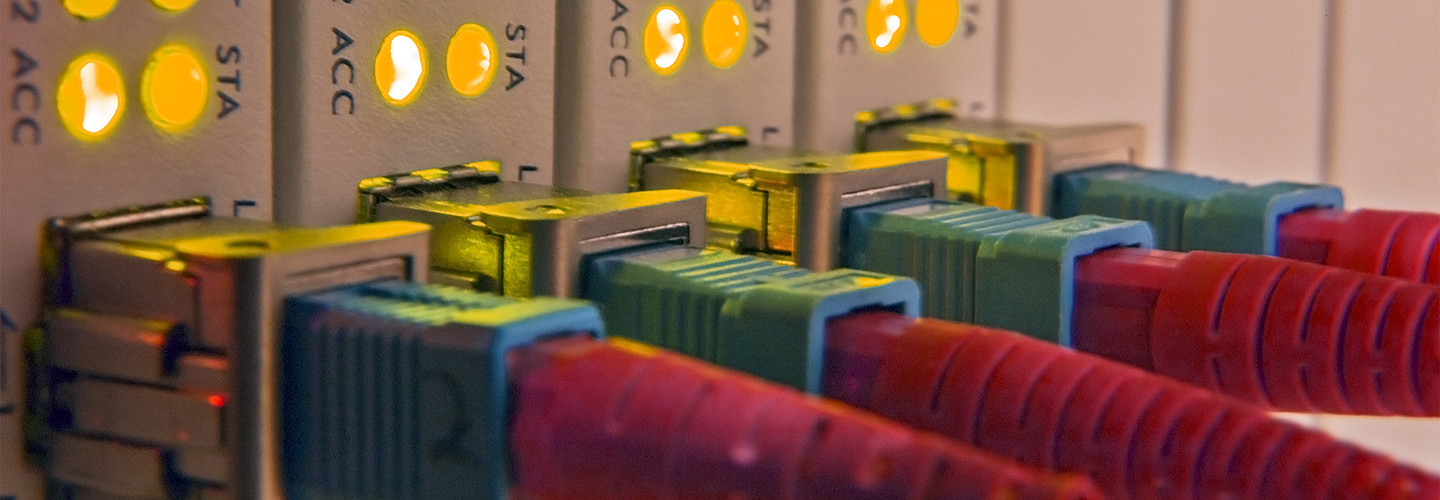Adams 12 Network Upgrade Puts District in a Class of its Own
Like many K–12 districts, Adams 12 Five Star Schools in Thornton, Colo., faced a number of challenges when striving to meet federally mandated requirements for the Common Core State Standards.
But when it came to overhauling its network infrastructure to support the initiative’s online assessment, the 40,000-student district wasn’t satisfied to simply achieve passing marks. Instead, Adams 12 sought to be at the top of the class in enriching the educational process and empowering teachers through instant and continuous access to technology.
“Our vision was always bigger than simply facilitating the online testing process,” says Project Manager Jean Schneider. “We wanted to get away from students having to go to a different room in order to use technology and instead, create an environment in which every classroom would be capable of utilizing it at any time.”
Reaching that goal required Adams 12 staff to bolster the wireless capabilities at its 50 schools significantly. Opting to add access points to every classroom and teachable space, the district purchased approximately 750 HP switches, 15 Cisco Systems switches, 5,000 Xirrus arrays and 500 miles of cable for the endeavor. To power this vast, new infrastructure, Adams 12 upgraded its existing 120V power supply to 208V.
Even more essential was the addition of a highly reliable power protection solution to properly safeguard the new environment — something a growing number of K–12 districts are beginning to appreciate.
“The long-term benefits of providing students with reliable power to achieve their educational milestones are immeasurable,” says Anu Cherian, senior industry analyst for Frost & Sullivan. “Students who have access to additional digital resources can truly leap ahead, translating into long-term economic benefits."
Network Solution Makes Outages History
Although Adams 12 schools had a variety of uninterruptible power supply systems (UPSs) from several manufacturers, the district had experienced spotty dependability from the units and remained vulnerable to ongoing issues with incoming power — all of which contributed to downtime and equipment damage.
“We have 52 buildings across five municipalities, served by two different electric companies,” Schneider says. “A lot of things can happen in our district, beyond our control, to cause a power loss.”
In addition to enhancing reliability and uptime, district leaders wanted a robust UPS solution capable of helping the IT team capitalize on another trend identified as part of its network upgrade: Power over Ethernet (PoE). As a result, the district wanted backup power not only for its switching inventory and wireless network, but for a variety of school services including Voice over IP, intercom systems, remote servers, phone systems, PBX boxes, security cameras, card readers and more.
“This changed our availability model,” says Erik Moore, director of academic computing services for Adams 12. “If we hadn’t been able to scale up with UPSs to handle that additional load, then we wouldn’t have been able to accomplish that.”
Scott Capser, the district’s senior enterprise systems engineer, says they were looking for a UPS that could power all of their systems to prevent a schoolwide outage.
“We wanted kids to be able to finish taking a test and get their homework assignments,” says Capser. “We wanted to allow teachers to finish a lesson and keep our Voice over IP working and be able to make announcements over the Internet. We couldn’t do any of that without having UPS coverage on the entire school system.”
With its objectives now clearly defined, Adams 12 turned to longtime technology partner CDW•G for assistance in executing the project. CDW•G, in turn, brought in Eaton to meet the district’s comprehensive power protection requirements.
Working together, the three organizations formulated a power protection strategy designed to be at the top of its class.
“Eaton helped us map out our entire solution,” says Dana Kukkonen, principal systems architect for Adams 12. “This really helped with the sizing and knowing exactly how much power we needed in every closet.”
Through the collaborative effort, Adams 12 deployed more than 100 Eaton 9PX UPSs, installing either a 6kVA or 11kVA unit at every school site, as well as in several remote locations and administrative offices. In addition, the district selected the Eaton 9130 rackmount UPS to safeguard equipment in numerous rack-based closets. In fact, Eaton customized four racks exclusively for the district.
“They were designing them on the fly as we were installing the UPSs,” says Moore. “Eaton was a great help. It was very impressive.”
More than 120 Eaton UPSs were deployed to keep essential operations up and running within Adams 12 Five Star Schools.
“We standardized on Eaton across the board,” he says. “We are truly amazed and impressed with how rapidly Eaton collaborated with us on such a vast project.”
Extended Battery Modules Improve Uptime
The district opted to bolster the UPS’ internal runtime by adding extended battery modules. Furthermore, the UPSs were outfitted with Eaton Network-MS Cards, which allow them to directly connect to the Ethernet network and the Internet, supporting real-time monitoring and control across the network.
For ultimate management and monitoring capabilities, Adams 12 relies on Eaton’s Intelligent Power Software, which combines power monitoring and management with graceful shutdown and extensive notification capabilities.
“We love the software, especially the remote management and monitoring features,” Capser says. “A lot of the school technicians now monitor their own buildings.”
Additionally, the district gained flexibility over power distribution by purchasing Eaton enclosure power distribution units, as well as the ability to keep an eye on hot spots using Eaton environmental monitoring probes. These enable remote monitoring of environmental conditions, including ambient temperature and humidity.
The new Eaton equipment has helped Adams 12 bolster the network’s availability and uptime.
“We have moved from an era where it was nice just to have a network to rely on, to one in which the network sustains education,” Moore says. “And when that network is down, it is highly disruptive.”
Frost’s Cherian says K–12 districts are recognizing the importance of power protection.
"Awareness about the need for reliable backup power is driving the growth of the UPS market,” she says, adding that schools gain a definite return on investment from more efficient systems and better management capabilities. “Despite the fact that data centers still hold the lion’s share of this market, educational institutions and other non–mission critical facilities are beginning to invest in high-end UPS systems.”
Adams 12 recently got to put its solution to the test, when a power outage cut electricity at one school site.
“The UPS ran for four and a half hours, and students just kept working on their notebooks,” Capser says. “The lights may go out, but on students’ devices, the lights stay on and they are still connecting to the network.”
“Everything is no longer brought to a screaming halt when the power is unexpectedly cut,” Schneider adds.
Adams 12 was so impressed with the equipment that it subsequently installed three 50kVA Eaton 93PM UPSs in its main and secondary data centers. With the new units, Adams 12 is looking forward to leveraging Eaton’s Energy Saver System, which enables the UPSs to attain an industry-leading efficiency level of greater than 99 percent.
When it comes to the success of its comprehensive Eaton power protection solution, Adams 12 has passed every test with flying colors. “The biggest benefit is pure uptime,” Capser reveals. “The power goes out and everything we have stays on. And we haven’t had a single device failure as a result of a loss of power.”
New Upgrade Puts District Ahead of the Curve
The district’s approach to the project has put it ahead of the educational curve.
“Taking a bigger-picture approach allowed us to accomplish a lot more, and in the long run, get a bigger bang for our buck and better results for our kids,” Schneider says.
In fact, while Adams 12 anticipates reaping cost benefits well into the future, the project’s return on investment is more accurately measured in nontangible factors. Of note, on the first day of Common Core testing, Adams 12 was one of the few districts in the state that did not encounter any problems.
“We had a 98 percent success rate, which is huge,” Schneider says.
Moore emphasizes that the real ROI can be tied to improvements in the learning process and the many ways technology is benefitting students and teachers.
“We now have benefits like textbooks that can be digitized so they are less expensive and can be deployed rapidly,” he says. “But more important, we have students highly engaged in their discipline, preparing to solve the great problems of society.”
“All school districts are facing a very high level of transition,” Kukkonen says. “They have to accommodate new devices, new curriculum and new offerings to transform education. Having the power resources in place has allowed us to offer that higher level of service.”
Adams 12 attributes the success of its complex undertaking not only to the unparalleled quality of the power protection equipment, but also to exceptional service.
“There was great communication between CDW•G and Eaton,” Schneider says. “We never had to get involved, and we always got our questions answered quickly.”
One key aspect was CDW•G providing procurement and inventory management of the UPSs during the course of the project, which occurred over a seven-month period.
“The staged delivery that CDW•G facilitated was truly life saving to this project,” Schneider says. “There is no way we could have received all those UPSs at one time.”
In addition, CDW•G oversaw the warranty process and handled any issues that arose throughout the project.
“We were moving so fast, there was no way we could have managed that,” Schneider says. “With Eaton and CDW•G working together, all we had to do with the UPSs was unbox and install them.”







